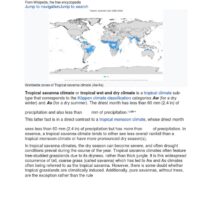As the globe grappled with the dire ramifications of climate change, attention has largely focused on carbon dioxide. While this greenhouse gas undeniably warrants close scrutiny, there exists another formidable adversary that demands urgent recognition: nitrous oxide (N2O). This potent gas, often overshadowed in discussions surrounding climate policy, harbors a myriad of implications both for our environment and our approach to sustainability.
Nitrous oxide, a colorless gas with a slightly sweet odor, is produced through both natural processes and human activities. Naturally, it emanates from microbial processes in soils and oceans. However, anthropogenic activities, particularly in agriculture, have exacerbated its release into the atmosphere. Nitrogen-based fertilizers, while critical for enhancing crop yields, emerge as one of the principal sources of nitrous oxide emissions. As farmers increasingly rely on these fertilizers to meet the food demands of a burgeoning global population, it presents a paradox of enhancing agricultural productivity while inadvertently contributing to climate change.
The potency of nitrous oxide is remarkable; it is approximately 298 times more effective at trapping heat in the atmosphere than carbon dioxide over a century. This astronomical greenhouse gas potential, or GWP, means that even minute quantities of nitrous oxide can contribute significantly to global warming. Currently, nitrous oxide accounts for about 6% of total greenhouse gas emissions, a statistic that belies the severity of its impact. The emissions trajectory of N2O is alarming, showing an upward tendency due to intensified agricultural practices and rising global demand for meat and dairy products.
Understanding the lifecycle of nitrous oxide provides deeper insights into its environmental footprint. Once released into the atmosphere, it can persist for over a century, engaging in complex interactions that further exacerbate the climatic challenges we face. As it enters the stratosphere, the gas undergoes photolysis, ultimately contributing to the depletion of stratospheric ozone. This interaction underscores a critical connection between various greenhouse gases, revealing that nitrous oxide not only intensifies global warming but also undermines the protective ozone layer that shields Earth from harmful ultraviolet radiation.
In addressing nitrous oxide emissions, innovative agricultural practices stand out as potential mitigating strategies. The application of precision farming techniques—such as GPS-guided equipment and soil moisture sensors—enables farmers to optimize fertilizer use, thus minimizing excess application. Moreover, the incorporation of cover crops and crop rotation can enhance soil health, reduce the need for chemical fertilizers, and ultimately decrease nitrous oxide emissions. By integrating these sustainable agricultural practices into broader farming systems, the challenge of nitrous oxide can be reframed as an opportunity for holistic environmental stewardship.
Legislative measures play an essential role in this endeavor. Policymakers and stakeholders must prioritize regulations that limit nitrous oxide emissions, setting enforceable limits on fertilizer usage while incentivizing sustainable practices. Such frameworks could include tax benefits for farmers who adopt eco-friendly techniques or invest in nitrogen-efficient technologies. When robust policy is coupled with grassroots initiatives and education, it spurs a paradigm shift whereby the agricultural sector transforms from being a significant contributor to climate change into a pivotal player in climate resilience.
The dialogue surrounding nitrous oxide should also extend to dietary choices. The relationship between livestock production and nitrous oxide emissions is a critical aspect that demands attention. Animal agriculture not only contributes to methane emissions but also amplifies nitrous oxide output via manure management and fertilizer application. Shifts toward plant-based diets or sustainable meat sourcing could alleviate this burden considerably. Raising public awareness of the environmental impacts associated with specific dietary choices can empower individuals to make informed decisions, thereby facilitating demand for sustainable food systems.
Furthermore, technological advancements hold promise in mitigating nitrous oxide impacts. The development of nitrification inhibitors presents a notable breakthrough, as these compounds can slow the conversion of ammonium to nitrate in soil, effectively reducing nitrous oxide emissions during fertilization. Moreover, research into soil microbiomes and their role in nitrogen cycling could unlock further strategies to minimize nitrous oxide release while maintaining soil health and plant productivity. These innovations highlight the potency of scientific inquiry; they can lead to transformative practices that enhance the sustainability of agricultural systems.
In juxtaposition to carbon-focused climate strategies, it is imperative that we adopt a more nuanced understanding of the interplay between various greenhouse gases. The complexities of environmental science necessitate an integrative approach where nitrous oxide is given its deserved prominence. As soil scientists, farmers, policymakers, and consumers work in tandem to elucidate the multifaceted issues associated with nitrous oxide emissions, it is vital to foster a movement rooted in informed awareness and actionable change.
Community engagement is instrumental in this collective endeavor. Public forums, educational outreach, and collaboration between agricultural experts and local communities can catalyze grassroots movements aimed at decreasing nitrous oxide emissions. When stakeholders converge—be it at farmer’s markets, local workshops, or policy roundtables—the synergy can yield impactful results, laying the groundwork for a culture of sustainability that transcends generations.
To encapsulate, as we navigate the labyrinthine challenges posed by climate change, it becomes increasingly clear that we cannot afford to overlook nitrous oxide. Recognizing its formidable role in climate destabilization requires a collective commitment to education, innovation, and policy reform. The future of our planet hinges on our ability to broaden our perspective beyond carbon and embrace a holistic approach to understanding and mitigating all greenhouse gases, particularly nitrous oxide. The time for action is now; the health of our environment and, ultimately, our very existence depend on it.







